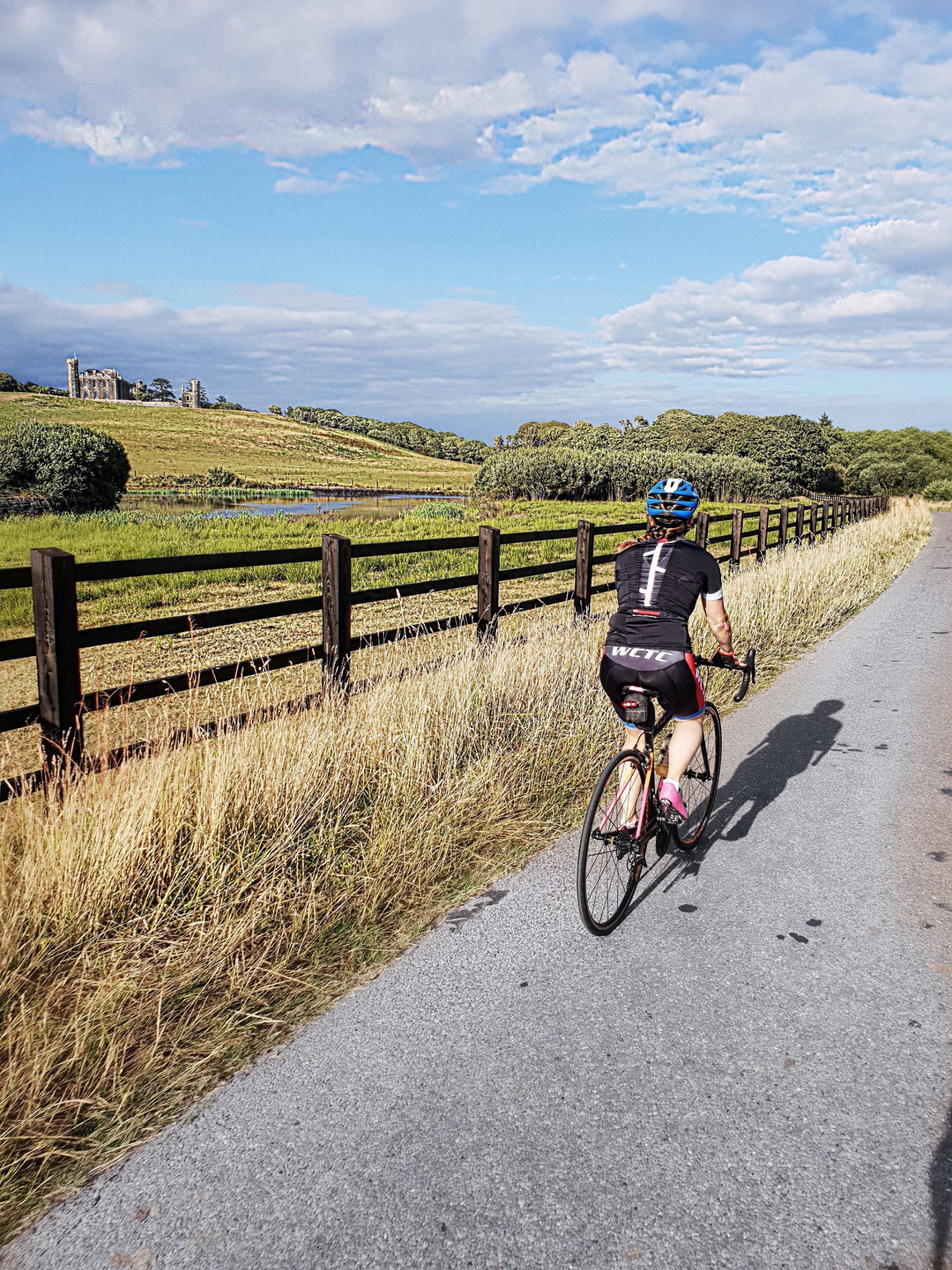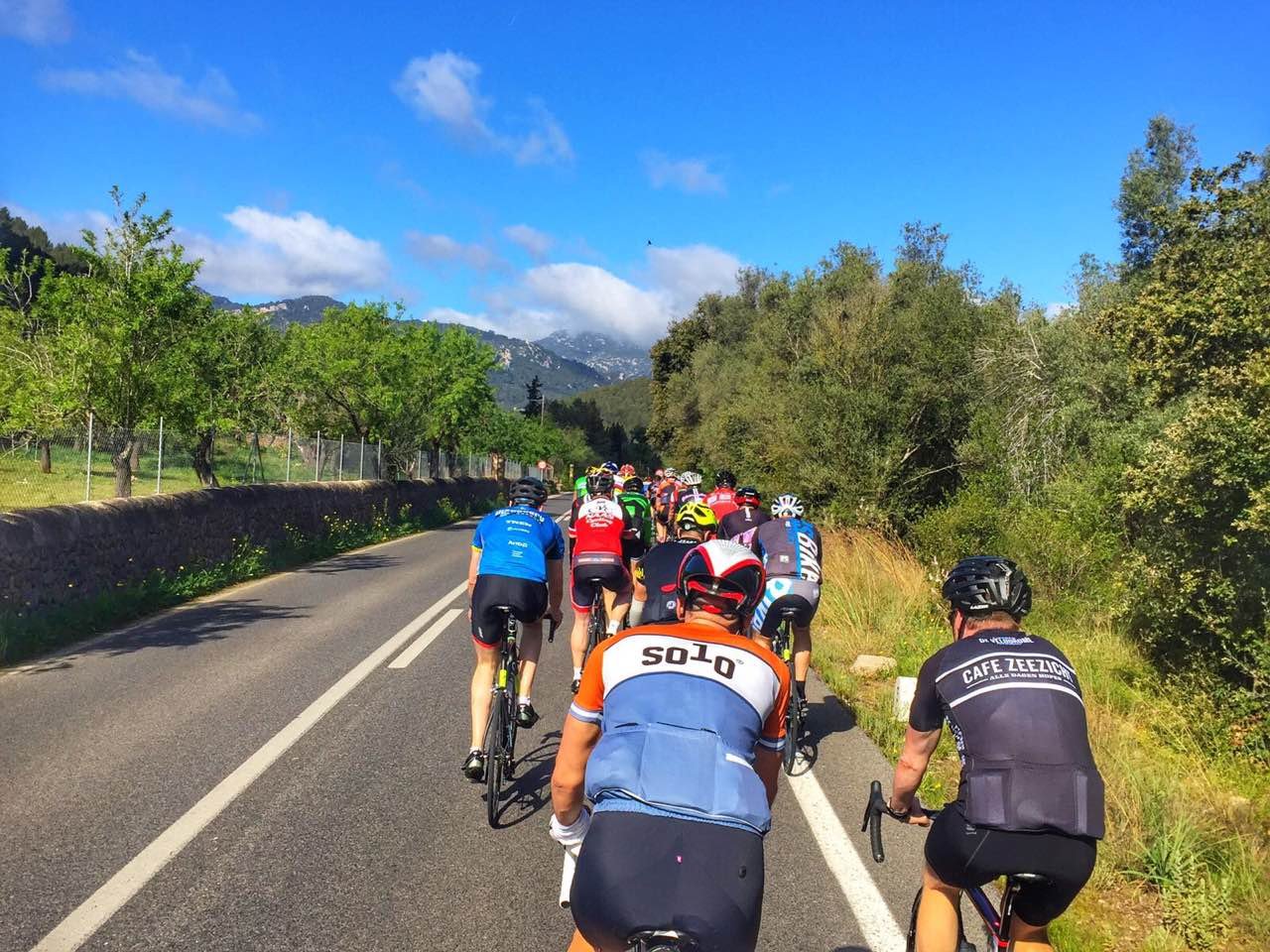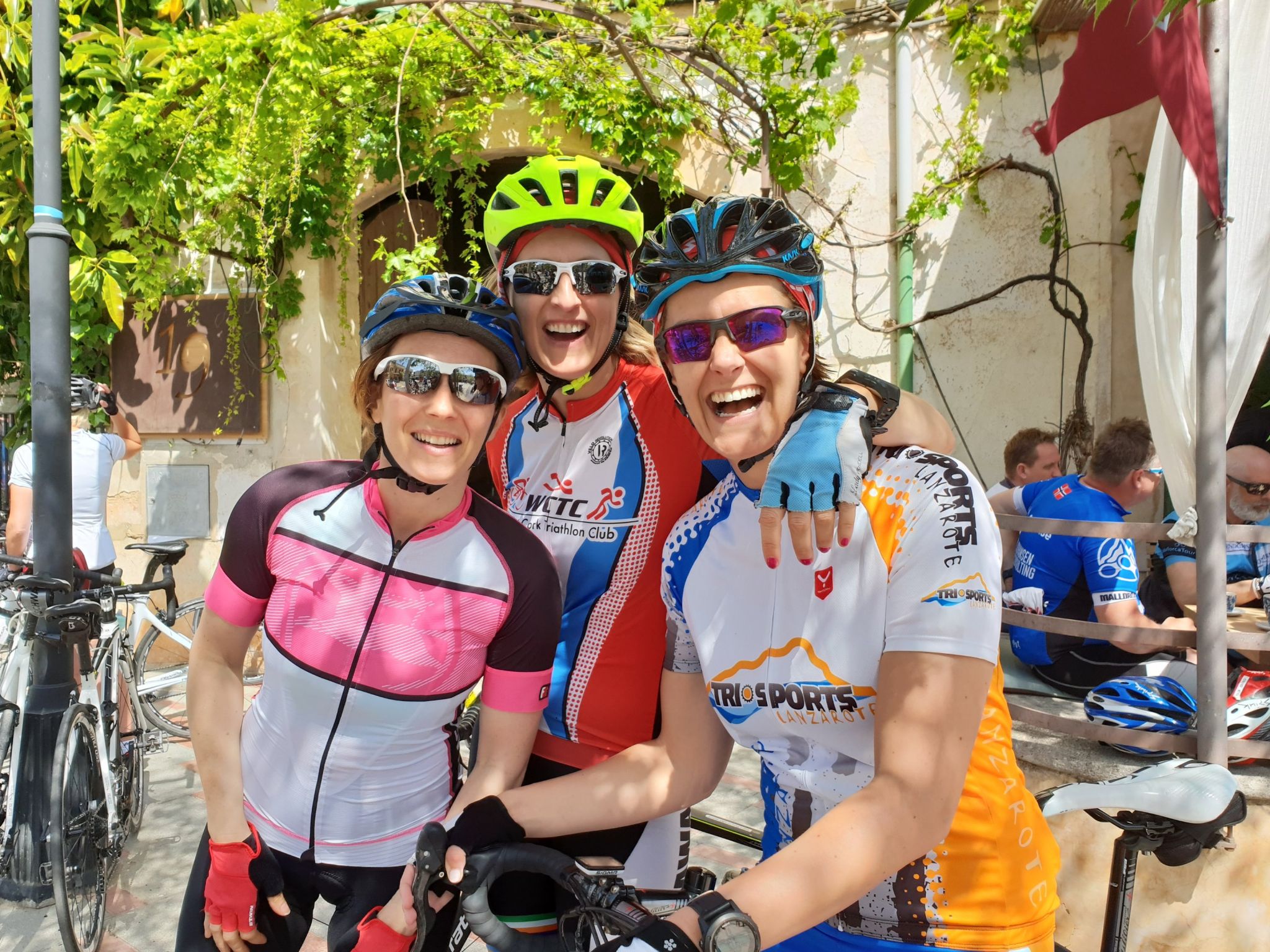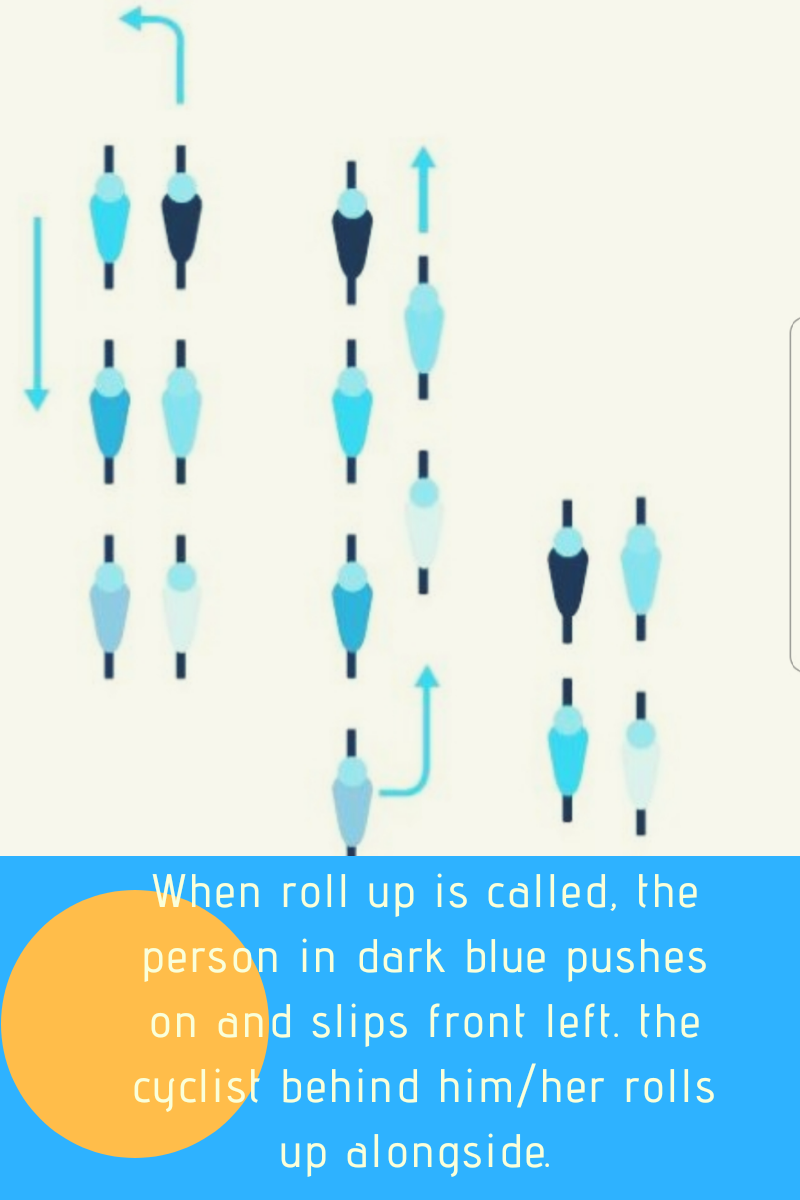Most of us can jump on a bike and roll along on our own quite easily. A quick spin to the shops or heading off to the beach with friends on a relaxed Sunday. However, when it comes to cycling in a group, most clubs adopt a cycling etiquette that would rival the discipline of the Navy. This isn’t just about being awkward. Discipline on the road is really life or death stuff. When cycling in a group, one wrong move on your part can throw 3 or 4 of your fellow cyclists under a bus. Now that would be awkward! So, before you head out on that group ride, have a read through my list for the prioritised Do’s and Don’ts of group riding (the type that you do on a bike!).
The Kit
Word to the wise – Don’t show up with deep section wheels and an aero helmet if you don’t intend to be home 3 hours before everyone else. There is no room for ego on a group cycle, although you may be fooled sometimes! The list below covers everything you might need in order of importance.
– A bike: 2 wheels and a set of working brakes. If everyone in your group has aero bars and carbon fibre bikes and you are on a mountain bike, you may get left behind, so choose your group wisely.
– Helmet: Make sure it ties properly
– High Vis clothing and Lights (red at the back is priority)
– A puncture repair kit: Buy in your local bike shop and ask them to go through repairing a puncture with you
– Cycling shorts: Trust me on this one….just invest!
– Good quality sunglasses or clear/yellow lenses for low light: You will appreciate the lack of dead flies on your eyeballs
– Chamoix cream: You can spend a fortune on fancy cream, or you can buy a tube of bepanthen.
– Cycling gloves – If you’re going out for an hour, don’t be a princess, do without the gloves. Anything longer, they will come in handy!
– Water bottle: One with water, one with a sugary drink

The Rules of The Road From Behind The Handle Bars
Come on now. We all know the rules. Cars are not allowed to hit cyclists. Its so obvious, yet it still happens. Before you pretend you know all the hand signals and all the safety measures, just know this – No matter how safely you cycle, there is always the possibility that a car will pass too close, too fast or simply not see you while they update their social media account. This is the scary truth for all road users. For this reason, you must always cycle defensively. This may sound drastic, but it is a fact.
– Respect other road users always and maintain your position in the road.
Do not weave in and out of the verge. Imagine that there is a cycle lane inside that dotted line to your left. Stick to that and don’t move outside it.
Ride Captain

– Each group should have a ride captain.
This individual should be familiar with the route being cycled and should be knowledgeable with regard to safety and the correct etiquette of group cycling. It is up to the ride captain to educate less experienced cyclists on the Do’s and the Do Not’s of group cycling. If there is any sign of unsafe cycling, the ride captain should be confident enough to flag it.
Cycling 2 abreast
– By law, cyclists are entitled to cycle two abreast on the road when it is safe to do so.
This prevents the line of cyclists becoming too long and allows a shorter passing distance for cars. Our club has adopted the rule of having a maximum of 12 individuals in a group so the line of cyclists isn’t so large that it blocks the flow of traffic. This can be quite daunting initially as you are responsible for yourself and by virtue of the fact that you are in the middle of the group, the cyclists in front and behind you are depending on you to cycle safely.
– When you go out the first few times, cycle at the back of the group and ask the ride captain if you can stay there. Get used to cycling behind another tyre and watch the roll up dynamic before you try it.
If you go down, everyone behind you goes down too! If the road is very busy, the ride captain might suggest splitting the group further to allow the flow of traffic.
– Where the road is narrow or where there are a lot of bends, it is a good idea to cycle in single file.

Keeping the Group in Tight Formation
When a group is cycling 2 abreast, it can often look to drivers as though there are three or four abreast on the road. It is important that the group cycles in tight formation, especially on busy roads. If there is 3 meters between cyclist 1 and 2, the group will be too spread out for a car to pass safely. This is frustrating for drivers and is often frustrating for those within your group as we all know that a frustrated driver is more inclined to drive aggressively.
– When cycling in a group, an important thing to remember is to never take your eyes off the cyclists in front of you. Always stay focussed and never switch off.
Don’t focus too much on one wheel. If you watch the group as a whole, you will be more prepared for anything that is coming up ahead.
Hand Signals and Turning
Hand signals are self explanatory – you stick your arm out to signal to drivers in front or behind, what you intend on doing next. They are an essential component of road safety when you don’t have indicators that light up and flash.
When on the bike, there is a specific process to preparing for a junction.
- Call “Slowing Down” and wave your right arm vertically to indicate to traffic that you are slowing.
- Use your left arm out/ right arm out to indicate to traffic behind and in front, where you intend on going.
- Call to your group – shout “Turning Left / Right”
- If you see a car coming, call “Stopping” and click out of your cleats. When it is safe to continue, call “Clear” and continue to cycle.
- At each point the group lead makes a call or a hand signal, you should repeat it in case the cyclist or traffic behind did not see or hear the call. It is also important to check for yourself that the way is clear and not depend solely on someone cycling 10 seconds ahead of you. The way may not be clear by the time you get to the junction.
Calling – What Else Should I Call?
There are 2 main elements that need to be called. The first is road surface and the second is traffic.
Road Surface: If there is a pothole, gravel, uneven surface or any other issue that could cause a cyclist to fall, this should be called by the first cyclist in the group and should be repeated back the line. A pothole on the left should be called as “On the left”. Grit on the road should be called out as “surface”. These calls can also be accompanied by hand signals. ‘On the left’ should be accompanied by a sweeping left arm. Some people like to wave a hand behind their back indicating that the following cyclist should stay out. Personally, I think this looks like they are waving away bad gas. It is better to accompany any hand actions with a loud call.
‘Car Up’ means that there is a car ahead. This is a good call if you are travelling on roads with bends and a line of cyclists behind you. ‘Car Back’ means that there is a car behind, possibly waiting for a safe time to pass. The more important of these calls is ‘Car Through’. This means that a car is actively passing the group. This can be especially important when a car is passing and it is not safe to do so. ‘Car Through’ will indicate to the group that they need to take extra care in maintaining their position and not sway out into the flow of traffic.
Lights and Visibility
Every cyclist should have a rear flashing red light. This should be standard. If cycling in dusky conditions or poor light, a front light is an advantage. No matter the weather or the conditions, you should always cycle in highly visible gear. All black is really not an appropriate outfit for group cycling. Kit with bright colours or a high vis top is always preferred. Yellow or green high vis is, believe it or not, not as visible on country roads as orange or pink. Yellow and green tend to blend in with the foliage, especially when the sun is low in the early morning or late evening.
– Bright colours should always be worn whilst cycling. Alternatively, a high vis vest in pink or orange is most visible in all light.
– Rear lights (red and flashing) are essential. A flashing white light at the front is ideal.

Specific Cycling Terms
There are lots of terms we use on the bikes that we would never use out and about in real life. Can you imagine passing someone with a shopping trolley in Dunnes screaming “On your riiiiiiiiiight……” (If you haven’t done it, you haven’t lived). So I am going to do some translation for you now.
Rolling Up
Lets say you are cycling in a group of 6, 2 abreast. The group captain will recommend how long the front cyclists will stay at the front and after that approximate time has elapsed, ‘Roll Up’ will be called. The individual in dark blue below may call “rolling up” or the ride captain might call “roll up” if the group has been slow to roll up at the front. Just like when you drive a car, before you change your position in the road, always check that it is safe to do so.
The individual in dark blue will push hard to get to the front left of the pack. The cyclist behind them will then cycle hard to come up alongside the dark blue cyclist. It may be agreed that roll up occurs every couple of kilometers or every couple of minutes.

Other Calls
On Your Right: When overtaking a cyclist, whether they are in your group or whether it is during a race, be sure to call “On your right”. This informs the cyclist in front of you that a vehicle (you) are overtaking them. With wind and the lack of engine sounds, they may inadvertently pull out to avoid uneven surface or for some other reason.
Notch: This call is so essential and is unfortunately used too often due to individuals not wishing to show they need a beat. It is great to push yourself, this is how you get better at cycling. But if you are 20 minutes into a 3 hour cycle and you are struggling with the pace, then it is a good idea to call Notch or ‘Half a notch’. This call should be passed up the group to the front rider who should then slow down.

Anecdotal Advice From Members of West Cork Triathlon Club
In putting this blog post together, I knew that there would be things I would forget. So, I asked my fellow club members to put together a list of the most important pieces of advice that you can give to a new cyclist.
The Do’s
- Practice taking your bottle out and putting it back without looking at it. I have nearly come off the bike once or twice after looking down for too long
- If you are going to stand going uphill, shout “standing” so the rider behind knows you will be slowing significantly.
- Keep between 12″ (very experienced) to a meter from the wheel in front. This is known as drafting. While it is illegal in competition, it is fantastic in training as it reduces your energy expenditure enormously.
- Head out on a cycle on your own first and if you have no garmin, use an app on your phone to determine your average pace. This will allow you to pick the correct group to cycle with. Each group will have their own pace and going with a group that is too fast will leave you struggling for the entire cycle.
- Front left dictates the pace
- Repeat all calls up (from the back) and down (from the front) the line
- Be On Time, especially in the Winter when cyclists get cold quickly.
- Have a plan and stick to it – route, speed, distance.
- Bring a fiver for coffee and scone stop.
- Ensure you have a good meal of carbohydrate and a little protein prior to your cycle. Sufficient fuel for the bike (carb based) and fluids are also an essential component of a successful cycle.
The Do Not’s
- Don’t be macho and stay at the front for too long. You will soon burn out while everyone behind you has been drafting off your back wheel
- Don’t roll up on the hills – everyone has different climbing abilities no cyclists should burn themselves out early in the cycle
- Don’t overtake around corners – blind corners, sharp corners, ANY corners. (This suggestion was given in caps…but I didn’t want to shout)
- Don’t forget your Chamoix Cream – If you haven’t had cycling rash on the tender skin around your saddle area, you really have never felt pain. For the shorter cycles, it isn’t really needed. But for your longer cycles, Bepanthen is an ideal product to use and costs around the same as any chammy cream.
Finally, have fun. If you are not having fun on a cycle, you are with the wrong group! There will always be days where you decide to go out with a different group with the intention of pushing yourself. These sessions almost always hurt. But that is the plan….right? For all the rest of the sessions, you should be enjoying yourself, perhaps with the exception of the hard sprint home.

You may not be comfortable rolling up immediately. You may prefer to leave 1.5m in between your wheel and the wheel in front, just take baby steps. Confidence comes slowly the more you cycle. There is nothing quite like a descent at 60kph on a good surface. Remember to smile (not too wide or you will get midgies* on your tonsils). Occasionally, give a “whoooooop” on the downhill just to tell yourself that life really is that good. Once you have mastered cycling and you want to move onto your running for triathlon, then the #justonemile programme might be for you.
Share any of your own advice in the comments.
Fi x

